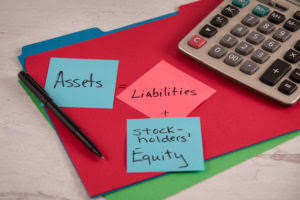Content

For example, an asset expected to last for five years would have 3 + 2 + 1 for a total of six. We’ll take a closer look at what this means below, starting with what the accumulated depreciation account is called. CS Professional Suite Integrated software and services for tax and accounting professionals. Suppose an asset for a business cost $11,000, will have a life of 5 years and a salvage value of $1,000.

Therefore, we’re going to create an Accumulated Depreciation account that will sit on the credit side of our accounting equation. The submarine will depreciate by $16,000 every year for five years. After five years it will have depreciated in value by $80,000, leaving it with a residual value of $20,000.
Double Declining Balance
(Cost basis – residual value) / number of years of the asset’s expected useful life. Using either of these methods, the depreciation amount changes from year to year, so it’s a slightly more complicated calculation than the straight-line method. First subtract the asset’s salvage how to calculate monthly depreciation value from its cost, in order to determine the amount that can be depreciated. Useful lifespans range from three to 20 years for personal property, years for land improvements, and are fixed at 27.5 years for residential real estate and 39 years for business real estate.

The value of an asset will most likely decrease over time, depreciation is a way to measure by how much and how quickly an asset declines in value. Many business purchases will need to account for depreciation in order to calculate the correct tax deductions each year. Common assets that depreciate quickly include equipment, cars, phones, and even rental properties. The double-declining balance depreciation method is an accelerated method that multiplies an asset’s value by a depreciation rate. You can use SYD function for this method to calculate the depreciation for a specified period.
More Definitions of Monthly Depreciation
For other methodologies, the accountants would also need to build the depreciation schedule using monthly pro-rata conventions rather than annually. The double-declining balance and sum of years digits methods are accelerated with higher expenses in the earlier years. This means that breaking down the annual expense into equal monthly allotments would still result in a higher expense for the first 12 months. Consider an asset a company purchased on Sept. 20, 2019, at the price of $6,000 with five years of useful life, a $0 salvage value, and depreciation under thestraight-line method. The annual depreciation expense is $1,200, quarterly depreciation is $300, and the monthly depreciation is $100. The calculation is based on initial asset cost, salvage value, the number of periods over which the asset is depreciated… Double declining balance is the most widely used declining balance depreciation method, which has a depreciation rate that is twice the value of straight line depreciation for the first year.

Companies can adjust their depreciation schedules on a pro-rata basis as necessary, based on the time the asset actually goes into service. There is also some terminology called thehalf-year convention, mid-quarter convention, and mid-month convention. Internal Revenue Service code may dictate the type of convention a company must use depending on the asset in focus. Calculating asset depreciation on a pro-rata or proration basis can potentially be an issue in the first and final year of expensing. This creates assumptions about the date when the property will be placed into service and the date it will be retired. Excel provides the SLN function for this method to calculate depreciation for a period. The function needs the initial and salvage costs of the asset as well as its useful life.
Exceljet
Accumulated depreciation refers to cumulative asset depreciation up to a single point during its lifespan. A workbook with examples of using the various depreciation https://intuit-payroll.org/ methods. The second section covers the remaining depreciation methods. Use this calculator to calculate the simple straight line depreciation of assets.
However, it can be an important detail for accountants to research and manage when incorporating a new depreciation schedule. Overall, depreciation is used for the benefits of spreading out a substantial cost and also matching incoming revenue with a monthly, quarterly, or annual expense record. Mainly, it is a legal way for a business to spread out the cost of an asset over a specified period of time. This keeps the business from reporting a large one-time cost that won’t dramatically affect the bottom line in a single reporting period. Rather, the company is allowed to spread out the expense over the life of the asset’s use.
To view full details, sign in with your My Oracle Support account.
However, when using this method we calculate depreciation based on the car’s current value, not original value. Another common method of depreciation is the diminishing value method. Because you drive it every day, leave the pizza in the back seat and draw smiley faces on the windows, the value goes down. We normally calculate depreciation on balance day, which is the last day of the financial year.
In the previous example, multiplying two by 1/5 (one year over the equipment’s useful life of 5 years) equals 0.4. Notice how in this second year our depreciation expense ledger has an opening balance of $0 whereas our accumulated depreciation ledger has an opening balance of $600. Accumulated depreciation is a term we haven’t come across yet. Accumulated depreciation, as the name suggests, is the total amount of depreciation that has built up over the years.
